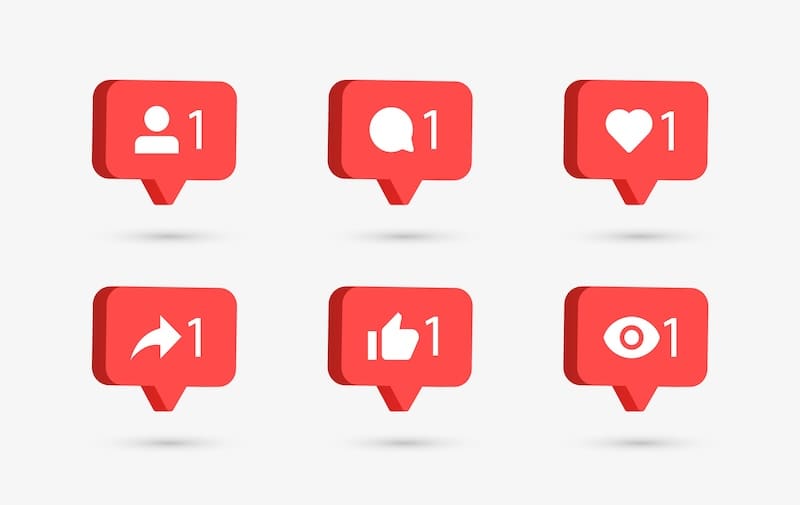This article answers the question, “Why is customer feedback important?” so you can prioritize reviews to boost your brand’s reputation.
Today, collecting customer feedback and acting on it matters more than ever. The modern customer is constantly leaving behind a digital trail that’s filled with reviews, social media posts, survey responses and more. And this digital footprint influences — and is influenced by — real-life buying decisions.
Brands that opt to ignore the feedback their consumers give them directly or indirectly risk losing those customers for good.
There are many types of customer feedback to stay tuned into:
- Forum posts
- Net Promoter Score (NPS)
- Online reviews
- Private customer feedback
- Reddit threads
- Social media comments
- Support messages
- Surveys
- User behavior analytics
Ultimately, customer feedback is now the backbone of today’s online reputation management (ORM). It influences trust, shapes brand perception and drives product decisions. Most importantly, it determines whether a brand will thrive or fall short.
In this article, we’ll discuss how your online reputation is interconnected with customer feedback, as well as the benefits of customer feedback for businesses. We’ll also discuss the 6 types of customer feedback and how they can each help you improve customer relationships.
NetReputation provides information and services to help you gather customer feedback and improve customer satisfaction. Call us at 844-461-3632 to learn more about gaining a competitive edge. You can also fill out the contact form below for a free consultation.
Request a Free Consultation
How Does Customer Feedback Shape Your Brand’s Online Reputation?
Customer feedback is one of the primary forces that shape your brand’s digital reputation. Every single comment, review or social mention is another data point that potential customers will refer to when deciding if they can trust your company.
Whether the customer feedback is excellent or critical, it’ll become part of the public narrative about your brand. Moreover, it will influence how credible, reliable and valuable you’re seen by your target audience.
Digital Word-of-Mouth Can Measure Customer Satisfaction
Public reviews have practically replaced personal recommendations — and they’re extremely influential on your audience.
Trustpilot found that more than 93% of online shoppers read reviews before making a purchase. And according to BrightLocal, 36% of consumers use two review sites when researching local businesses, and 41% of customers read online reviews on at least three sites.
Additionally, social proof plays a major role in the buying psychology of today’s consumers. Essentially, social proof means that people look to others to determine what’s correct, desirable and trustworthy. If others have a positive experience with your brand, potential customers are more likely to put their trust in you.
But it also goes the other way. If word spreads that your brand is not trustworthy, many customers won’t take the chance to find out on their own.
What’s especially important to know is that digital word-of-mouth spreads faster and lasts longer than ever before. Even a single forum comment, review or social media post can reach thousands or millions of people if it goes viral. Traditional word-of-mouth fades fast, but online word-of-mouth can be searched for and shared indefinitely.
Feedback From Satisfied Customers Creates Visibility
Google surfaces reviews in search results, and it’s the most-used website to gather customer feedback, followed by Facebook, Yelp and Tripadvisor. Furthermore, your business’s customer feedback affects everything from click-through rates to brand authority. High ratings and positive reviews make your listings more attractive and click-worthy in search results. When customers consistently provide high-quality feedback, your brand will be viewed as authoritative, credible and trustworthy. Both customers and search engines will reward you.
Protecting the Brand Narrative Even When Negative Feedback is Present
One of the powers of positive feedback is that it can reinforce your brand’s chosen positioning. Unfortunately, negative feedback can also define you, especially if you don’t get ahead of the story and define your brand first.
There are two ways your brand narrative can develop: organically or by being curated.
Organic Narrative
An organic brand narrative is the stories that customers tell without you being involved. It includes:
- Complaints or praise
- Reddit discussions
- Social media mentions
- Unsolicited reviews
The way this type of brand narrative is shaped is unpredictable, and often, customers are emotionally charged (especially if they’re upset). Plus, this type of narrative-shaping is based on real experiences, reflecting the authentic public perception of your brand. To that end, it can snowball in either direction, positive or negative.
Curated Narrative
A curated brand narrative is the story that your company tells through deliberate ORM efforts. It includes:
- Collecting survey data and sharing positive metrics
- Encouraging happy customers to leave reviews
- Publishing case studies and testimonials from real customers
- Thoughtfully responding to reviews
This type of narrative-shaping is intentional and strategic. It reflects the positioning the brand desires and balances out less-than-flattering organic sentiment.
Customer feedback is important for your business and should never be ignored. Call us at 844-461-3632 for more information about collecting customer feedback and using it to inform your business decisions.
Why Is Customer Feedback a Core Component of ORM for a Successful Business?
Customer feedback isn’t a nice-to-have addition to your business; it’s an absolute necessity for effective reputation management. How your customers perceive your brand and talk about it online directly affects search rankings, trust, visibility and your bottom line.
Reputation Signals That Search Engines Use
Search engines do so much more than simply evaluate keywords to match a query to your content. They also assess the public perception of your business. By using reviews and customer feedback as trust signals, search engines can figure out how to rank your content on the search engine results page (SERP) and maps.
- Review Velocity: How frequently and quickly customers leave reviews tells search engines how engaged your audience is. A lot of reviews all of a sudden tell the tale of a popular, trustworthy business; a lack of frequent reviews suggests a stagnant or irrelevant brand.
- Review Diversity: Search engines want to see a range of customer feedback sources. Having reviews across major platforms (Facebook, Google, Yelp) as well as more niche platforms can provide a well-rounded view of your brand.
- Review Quality: Detailed and thoughtful reviews that reflect real experiences are better than generic praise that could come from anyone. Thorough reviews show authenticity, which is rewarded by search engines through higher rankings.
By managing and monitoring these trust signals, your brand can give customers and search engines the data needed to choose your brand above others.
Collecting Customer Feedback Can Function as an Early Warning System
Customer feedback has a tendency to highlight problems well before they escalate into enormous issues. ORM experts rely on these valuable insights to identify an emerging risk before it gets out of control.
Emerging problems can be uncovered by paying attention to repeated complaints about a product or service. Or, an employee may indicate that there’s a systemic issue somewhere.
Monitoring sentiment trends can also point to a problem that’s rearing its ugly head. Shifting from neutral or positive feedback to a growing pile of negative reviews can point to a reputation problem.
Spotting warning signs like this early means that brands can take the corrective action needed to avoid a crisis. Plus, in addition to preventing long-term damage, you have the chance to turn a dissatisfied customer into a happy one before they abandon your company for good.
The ORM Feedback Cycle
There’s a structure that’s needed to effectively manage customer feedback, and the process is never finished — instead, it’s continually repeating itself for the life of the brand.
The purpose of this feedback cycle is to turn raw opinions into actionable insights. Here’s how it works:
- Monitor: Feedback channels, including forums, social media and review sites, are tracked, allowing the brand to capture all relevant conversations.
- Analyze: Trends are identified by paying attention to recurring complaints and sentiment patterns. This allows brands to learn what makes a customer satisfied or dissatisfied.
- Strategic Responses: How your brand responds shapes public perception. When engaging with customers, address their concerns, thank them for their feedback (whether it was positive or negative feedback), and gently correct misinformation.
- Make Improvements: The valuable insights you gather should be fed into business operations where appropriate. Take action to enhance customer service, marketing, products or whatever else isn’t living up to its potential. This will prevent issues from repeating.
- Amplify: Share case studies, social proof and testimonials to show your audience the excellent experiences others have had.
Continually going through these steps means that the feedback customers leave you won’t be idle.
At NetReputation, we work with businesses on collecting customer feedback and improving customer loyalty. Give us a call at 844-461-3632 to learn more.
Preventing Reputation Damage and Improving Customer Satisfaction
Responding to customer feedback quickly and thoughtfully is a key component of protecting your brand’s reputation. Importantly, if you ignore feedback, negativity can continue to grow.
Almost 62% of online shoppers search for a company online if they’re not familiar with it, and very few of them will make a purchase if negative customer feedback shows up on the search results page. How you respond matters, too — 88% of consumers would use a business that replies to all reviews, both positive and negative, while only 47% would use a business that doesn’t respond to its reviews.
Remember, when it comes to ORM, prevention is always a better option than reaction. Take a proactive approach to turn even challenges into business opportunities.
6 Types of Customer Feedback (And Why Each Type of Customer Feedback is Important)
There are all sorts of customer feedback types, and they’re not all created equal. Businesses can gather feedback from a number of channels, and each one has a unique purpose when it comes to shaping brand reputation.
Direct Feedback
Direct feedback comes from the customer through designated feedback channels, such as:
- Contact forms
- Email responses
- Surveys
This type of private feedback offers customers a safe space to share their concerns or make suggestions without having to go public.
For brands, this type of feedback is excellent — it’s actionable but doesn’t expose the company’s flaws.
Public Reviews
Public reviews are on platforms that anyone can access, such as:
- Amazon
- Yelp
- Niche sites
Potential customers rely heavily on this type of social proof to gauge a brand’s credibility. If your ratings are high, this signals trust, and people will be more likely to buy from you.
Both the number of reviews and the sentiment of the reviews matter. Having a lot of reviews tells you that your customers are engaged, and sentiment trends clue you in to customer satisfaction.
Social Media Feedback
This type of feedback includes comments, direct messages, mentions and tags on social platforms like Instagram, LinkedIn and TikTok.
With the ability for social content to go viral, one post can reach thousands of potential customers. That means that whether you’re being praised or criticized on social, the message will be amplified.
Because of how fast social media moves, it’s a great real-time barometer of your brand’s public perception. It’s important to respond fast on these channels — Sprout Social found that when using social platforms to connect with brands, 30% of consumers expect a same-day response, 23% of consumers want a response within 1 to 2 hours, and 16% of consumers expect to get a response within minutes.
Online Communities and Forums
Online spaces that are driven by discussion (like Quora and Reddit) give brands candid, unbiased and honest feedback. Since these conversations are often less filtered than other types of user feedback, they’re extremely valuable for business owners who don’t want their reviews sugarcoated. Plus, consumers are drawn to them because they feel they can get the most real take possible online.
By keeping an eye on these conversations and getting involved when appropriate, you can sway the opinions of critics and hopefully win over some members of the community.
Behavioral Feedback
This type of user data measures how people interact with your app, product or website. Examples of behavioral feedback include:
- Abandoned carts
- Bounce rates
- Clicks
- Heatmaps
Finding out where customers get hung up in the conversion process can tell you which areas need smoothing out. For example, a lot of abandoned carts could point to a payment processor issue or confusion about fees or return policies. High bounce rates could mean slow page loading speeds, being directed to content that doesn’t match what the visitor wants to see or confusion about what to do on the page.
Competitive Feedback
While this type of valuable feedback doesn’t directly relate to your brand, it’s a great way to figure out what customers like about your competitors and what they’re missing. By reading your competitor’s customer comments, using social listening tools for mentions, and checking out the company’s reviews, you can identify opportunities for your own brand. Most importantly, you can figure out where there’s a gap that you can fill.
Final Thoughts About the Benefits of Customer Feedback
Customer feedback is so much more than a collection of reviews. It’s a tool for growing your business, managing risk and making your digital reputation shine.
Every single comment, mention or rating you gather is powerful customer feedback that tells you:
- How your brand is perceived
- What your customers value
- Where your business can make improvements
Brands that listen, learn and strategically respond to customer feedback protect and strengthen their business reputation. In this way, everyday interactions become chances to build better products, make customers feel valued, and improve customer loyalty.
Make it a point to put customer feedback at the heart of your ORM strategy. You’ll improve the customer experience for current and future customers while safeguarding your company’s success at the same time.
Whether you need help to improve customer retention, find new customers or create loyal customers who return over and over, we can help. Get started today with a free consultation with one of our experts. Call us at 844-461-3632 or fill out the contact form below.















